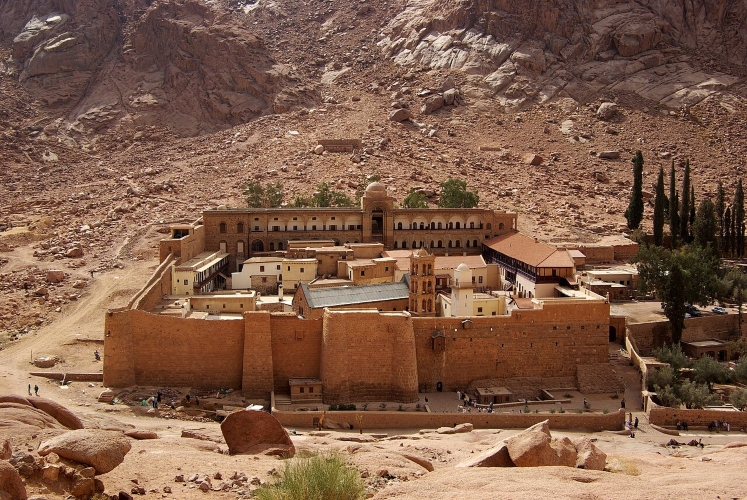Egypt Moves to Integrate St. Catherine Monastery into Massive “Spiritual Disneyland” Project in Sinai

Πηγή Φωτογραφίας: Eurokinissi (Αρχείου)//Egypt Moves to Integrate St. Catherine Monastery into Massive “Spiritual Disneyland” Project in Sinai
A highly contentious Egyptian court ruling has transferred ownership of the historic St. Catherine’s Monastery in Sinai to the Egyptian state, sparking tensions with Greece and raising concerns about the site’s future.
The ruling, which has drawn international attention, allows the monastery’s 20 monks and 91-year-old abbot, Archbishop Damianos of Sinai and Raithu, to continue religious practices but strips them of property ownership. The decision is seen as a step toward integrating the UNESCO World Heritage Site into Egypt’s ambitious “Great Transfiguration Project,” a tourism-driven initiative critics have dubbed a “spiritual Disneyland.”

Court Ruling Fuels Ownership Dispute
The court’s decision, leaked to the press, designates the monastery and its surrounding properties as archaeological sites under the supervision of the Supreme Council of Antiquities. Key assets, including the monastery’s gardens, olive groves, and sacred sites like the cave of Saint John of the Stairs, have been transferred to state control. These areas, critical for the monastery’s self-sustainability, include the gardens of Agioi Saranta (housing vital springs) and Agioi Anargyroi (home to ancient olive groves).

Greek officials have expressed outrage, with a delegation from multiple ministries scheduled to visit Cairo next week to negotiate a resolution. Both nations are in ongoing talks to address the dispute, but Egypt has reaffirmed its commitment to the project, prioritizing tourism development.
The Great Transfiguration Project
The “Great Transfiguration Project” aims to transform the St. Catherine area, revered for its biblical significance as the site where Moses received the Ten Commandments, into a “world-class spiritual and tourism destination.” With over 90% completion as of May 2025, the project includes five-star hotels, malls, chalets, restaurants, and recreational facilities. A “Peace Square and Building” spanning 12,000 square meters will feature a museum, a theater, a conference hall, and a cafeteria. Additional developments include an expanded eco-lodge with 74 chalets, a new 192-room eco-lodge in Wadi El-Raha, and a mountain hotel with panoramic views of the monastery and Mount Sinai.
The project also involves infrastructure upgrades, such as a road network linking South Sinai’s tourist hubs, including Dahab and Sharm El-Sheikh, as well as flood safety measures and the potential development of St. Catherine Airport. A pedestrian walkway, known as “Moses’ Path,” will guide visitors along the historic route to the Mount of Transfiguration, while golf carts will transport tourists from parking areas to the monastery.
Commercial Interests at Play
The initiative, backed by Egypt’s Ministries of Urbanization, Tourism, and Environment, along with investors reportedly including the Marriott hotel chain, is expected to attract 30 million tourists by 2028. Critics argue the project prioritizes commercial gain over the site’s sacred character, with plans to create a “premium destination” for holistic tourism and mountain climbing. The monastery, originally slated to become a museum, will retain its “monastic character” but under strict state oversight, raising fears that its spiritual significance could be overshadowed by mass tourism.
Local and Global Implications
The project also includes upgrades for the local Bedouin community, such as a new residential compound in the Zeitouna region with 21 hotel complexes and 546 residential units. However, the influx of tourists and large-scale development threatens to disrupt the serene environment of the Holy Valley, a site of profound religious importance for Christians, Jews, and Muslims.
As Egypt advances with its vision, the international community closely watches. The transformation of St. Catherine Monastery into a tourist hotspot risks altering one of the world’s oldest Christian monasteries, prompting questions about balancing heritage preservation with modern development.
Source: pagenews.gr
Διαβάστε όλες τις τελευταίες Ειδήσεις από την Ελλάδα και τον Κόσμο






Το σχόλιο σας